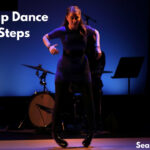Corina Andrian’s Dancen is a mesmerizing dance film that seamlessly blends the worlds of Tanztheater Wuppertal and Romanian contemporary dance. Set against the backdrop of Wuppertal, Germany, this film is more than just a visual treat; it’s a profound exploration of human connection, urban landscapes, and the power of dance to express our innermost emotions. Through innovative choreography and striking visuals, Andrian crafts a cinematic experience that is both deeply personal and universally resonant, making Dancen a must-see for anyone passionate about dance and its ability to tell compelling stories.
This unique film emerged from a collaboration between Romania and Germany, fostered by Tanztheater Wuppertal. Project manager Anastasia Grigore, while pursuing her Masters in Choreographic Art, initiated an Erasmus+ internship at Tanztheater Wuppertal. This experience nurtured a strong bond and a desire to bridge Romanian dance culture with the renowned German company. With support from various cultural organizations, Grigore brought together a team of Romanian dancers, a live band, and a film crew, including director Corina Andrian and DOP Cătălin Rugină, to capture this artistic exchange.
Dancen is actually a part of a larger documentary project, RAWDANCE: Moving Talks, which delves into interviews with artists rehearsing at the future Pina Bausch Zentrum and members of Tanztheater Wuppertal. This broader project explores the future of the Pina Bausch company and the deeper meaning of dance and art for these individuals.
The film’s narrative unfolds through ‘accumulation,’ with the dance ensemble growing progressively larger.
Andrian explains that the driving force behind Dancen was to capture the essence of Wuppertal and the spirit of cultural exchange. Drawing on her extensive knowledge of dance film, she aimed to move beyond typical portrayals of dancers in urban settings. Instead, she chose to delve into the dancers’ internal experiences. The film embodies the idea that chance encounters in a city can profoundly alter our day and lives. This concept is visually represented through the film’s structure, where the group of dancers expands gradually, mirroring how our lives are shaped by accumulated experiences. The urban environment, with its overwhelming stimuli, becomes a canvas onto which emotions are projected, and fleeting, yet meaningful, connections are made with strangers.
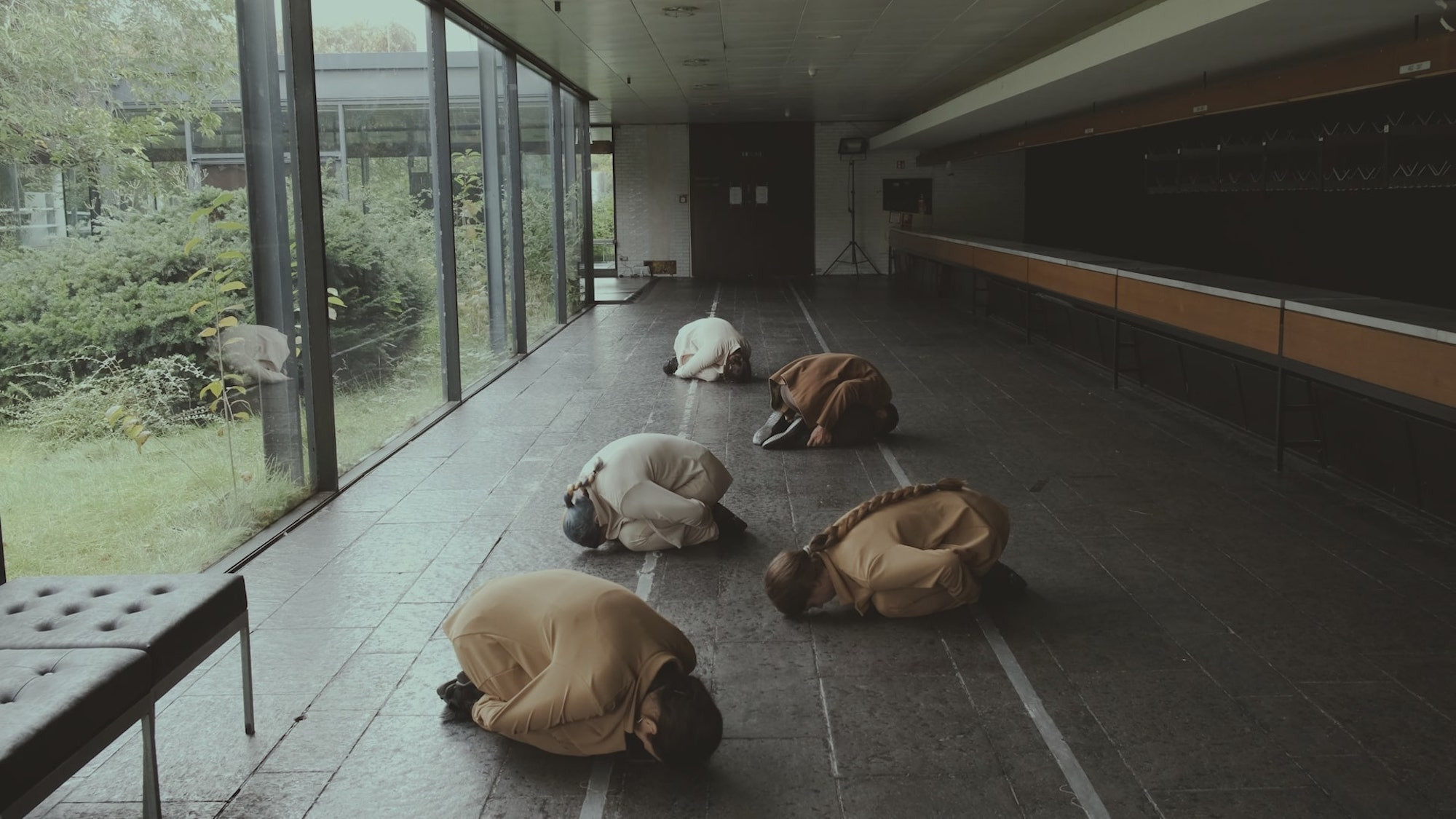 Dancen
Dancen
Crafting Choreography from Life: The Dance Language of Dancen
The choreography in Dancen stands out for its organic and deeply personal nature. Andrian reveals that the movement vocabulary was largely inspired by observing the dancers’ everyday interactions. Her background in diverse dance styles, including classical ballet, contemporary dance, butoh, gaga, and contortion, provides her with a keen understanding of body language. This expertise allows her to translate subtle nuances of movement into a powerful visual narrative. For Andrian, watching dance is not just a visual experience but an embodied form of intelligence, engaging multiple senses.
During their time in Wuppertal, the shared living space fostered an intimate environment. Andrian meticulously documented the dancers’ interactions during rehearsals, breaks, and downtime, noting their movements and even the sounds they made. She then connected these observations with specific locations in Wuppertal that resonated with similar emotions, either through color palettes or the quality of light. This process highlights how deeply the film’s choreography is rooted in lived experience and the surrounding environment.
For me, watching dance involves not just seeing but a complete embodied understanding.
Collaboration and Emotional Honesty in Movement
Collaboration was central to the creation of Dancen. After spending days filming the dancers for the documentary, Andrian shared her vision for the dance short. The dancers responded with enthusiasm, offering personal anecdotes and inside jokes that further enriched the choreography. This collaborative spirit was crucial, as Andrian prioritized authenticity and emotional honesty over technical complexity in the dance. Each movement in Dancen carries a story, reflecting universal emotions like fear, rejection, loneliness, and love.
One pre-choreographed segment from their street performances, incorporated into the film, is the synchronized movement on the bridge. Another striking sequence, where the dancers softly sing Lume, lume while holding each other’s shoulders, emerged from a dream Andrian had the night before filming. This scene poignantly symbolizes mutual support and the journey through life and death. Even moments like the dancers waiting at a red light that never changes are drawn from personal experiences, representing periods of prolonged waiting and uncertainty in life.
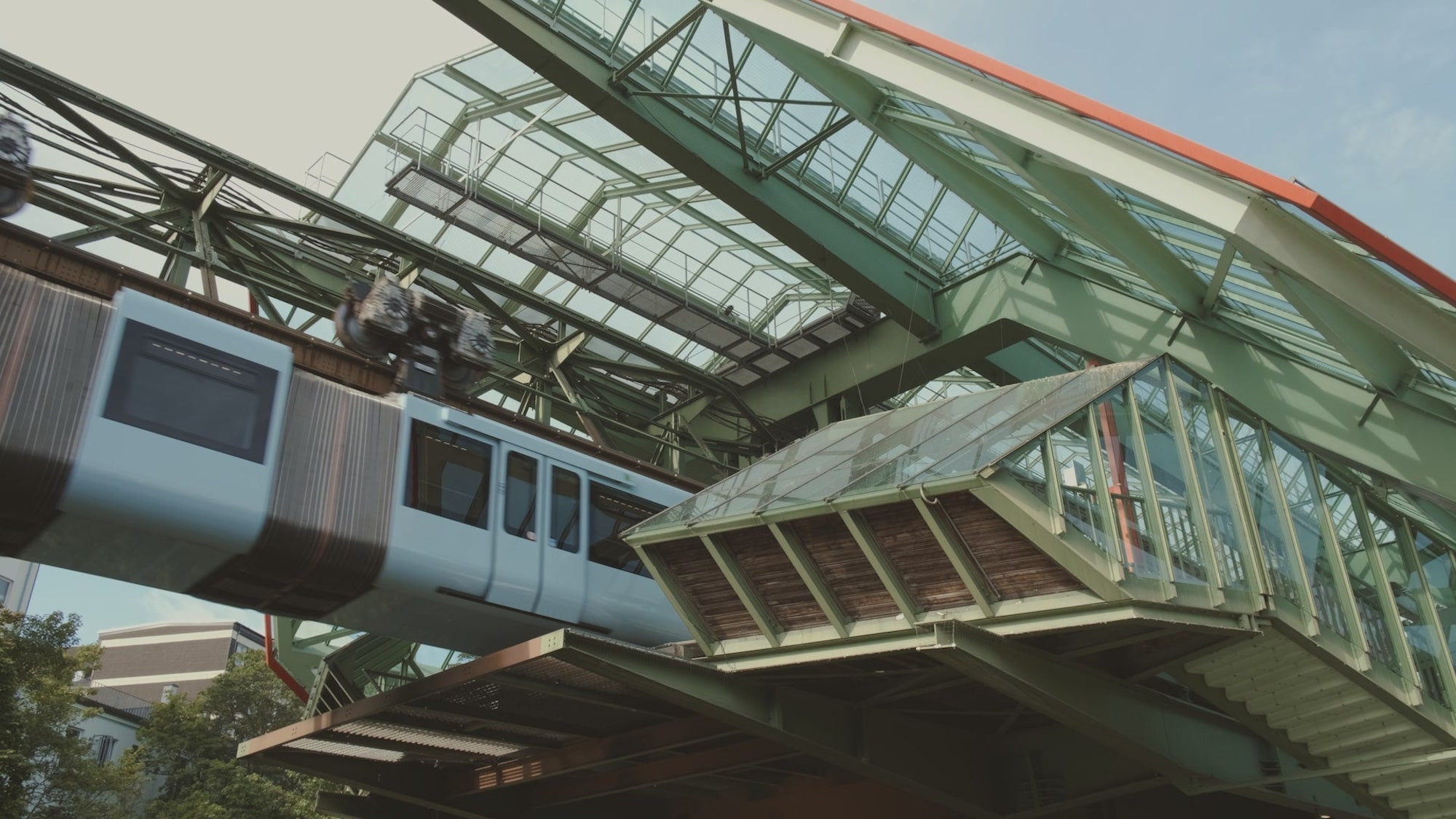 Dancen
Dancen
Wuppertal as a Dance Stage: The Schwebebahn and Urban Space
The city of Wuppertal itself plays a significant role in Dancen. The iconic Schwebebahn (suspension railway) is not merely a backdrop but an integral element, immersing viewers in a unique and almost surreal urban space. Andrian admits that Wuppertal was initially chosen due to the documentary project, but it became a serendipitous discovery. The city, home to Pina Bausch’s creative legacy, offered a palpable understanding of the environment that shaped her groundbreaking work. Andrian’s concurrent tanztheater classes in London further deepened her appreciation for Bausch’s methods.
In long, grueling periods, life can feel like an endless wait for the next event.
Beyond Pina Bausch, the Schwebebahn is Wuppertal’s most recognizable symbol – futuristic and playful. Its inclusion in Dancen felt natural, representing a beloved and omnipresent aspect of the city. The final scene, filmed at the future Pina Bausch Zentrum, a space steeped in history, further connects the film to the city’s artistic soul. Andrian envisioned the verdant location as a neutral space, a “purgatory” where souls meet and bid farewell through symbolic dances and gestures. The recurring motif of spinning embodies the cyclical nature of life and death.
Time, Repetition, and Urban Rhythms in Dance
Transportation, particularly the Schwebebahn, functions as a recurring motif in Dancen, representing the passage of time and the interplay of life and death. Andrian incorporates repetition, reminiscent of art installations, into her work. Characters often become caught in loops of repetitive actions, exploring how repetition can lead to transformation. She describes this as “losing form in order to gain form,” suggesting that repetition can induce a kind of “temporary death,” allowing for recalibration and renewal.
Dancen features numerous instances where characters are caught in loops, break free, and continue. This is visually represented through the synchronization with the urban environment, especially traffic. The seamless integration of the Schwebebahn and traffic into the dance choreography was meticulously planned, requiring multiple takes to achieve perfect timing and synchronization. This dedication to detail underscores the film’s exploration of urban rhythms and their impact on human movement and experience.
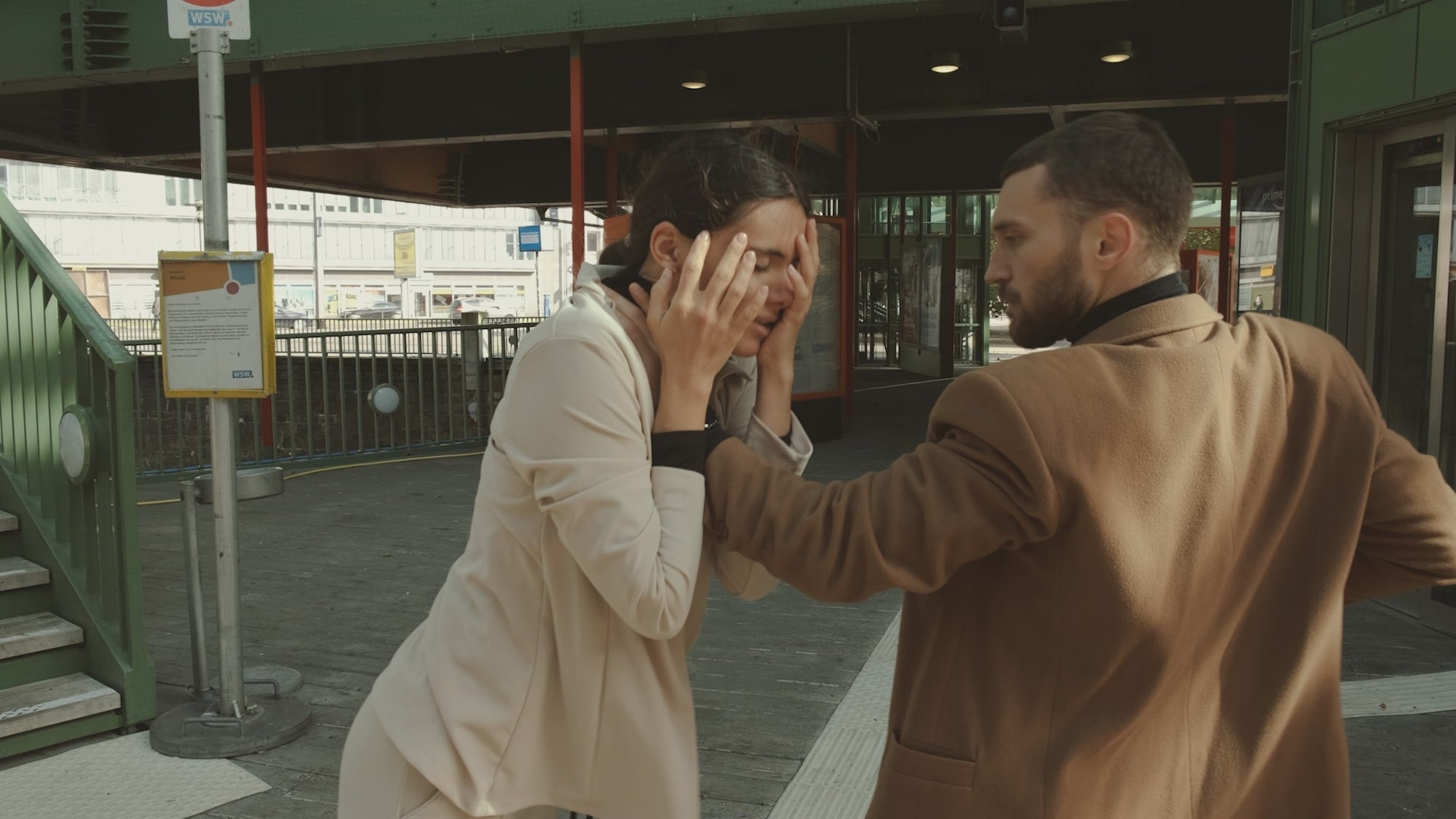 Dancen
Dancen
A Musical Tapestry: Folk, Electronic, and Emotional Resonance
The eclectic soundtrack of Dancen, ranging from Romanian folk tunes to trip-hop, is a crucial element of the film’s atmosphere. Andrian’s desire to incorporate Romanian cultural elements led her to collaborate with Argatu’, a musician known for blending traditional Romanian folk music with modern electronic genres. This musical fusion mirrors Andrian’s own experience of living between Romania and other countries, embodying a sense of hybridity and belonging everywhere and nowhere simultaneously.
Synchronizing with the traffic was the most challenging aspect. Every train you see is intentionally placed.
Argatu’s music effectively conveys nostalgia for a time not personally experienced but felt through generational memory. Andrian carefully selected tracks from his extensive discography, ensuring that the music resonated with the moving images and amplified the film’s emotional depth. The soundtrack contributes significantly to Dancen‘s unique atmosphere, blending cultural heritage with contemporary sounds.
Visual Style: Warmth and Cool Distance
Dancen‘s visual aesthetic is characterized by warm colors juxtaposed with a sense of cool detachment. Andrian and DOP Cătălin Rugină focused on capturing the interplay of light and shadow in Wuppertal’s diverse locations. They meticulously planned scenes to coincide with specific lighting conditions and even the Schwebebahn’s movements. The scene where a dancer sneezes and falls, for instance, involved an hour of filming to synchronize the action with fleeting sunlight and the overhead train.
The film was primarily shot handheld using a Fujifilm X-T4 camera, occasionally stabilized with a DJI Ronin-S gimbal, and paired with a versatile 18-55mm lens. This setup allowed for flexibility and responsiveness to capture the dynamic movements of the dancers and the urban environment.
Behind-the-scenes image from “Dancen” showcasing the filming process in Wuppertal, highlighting the handheld camera work and urban setting.
 Dancen
Dancen
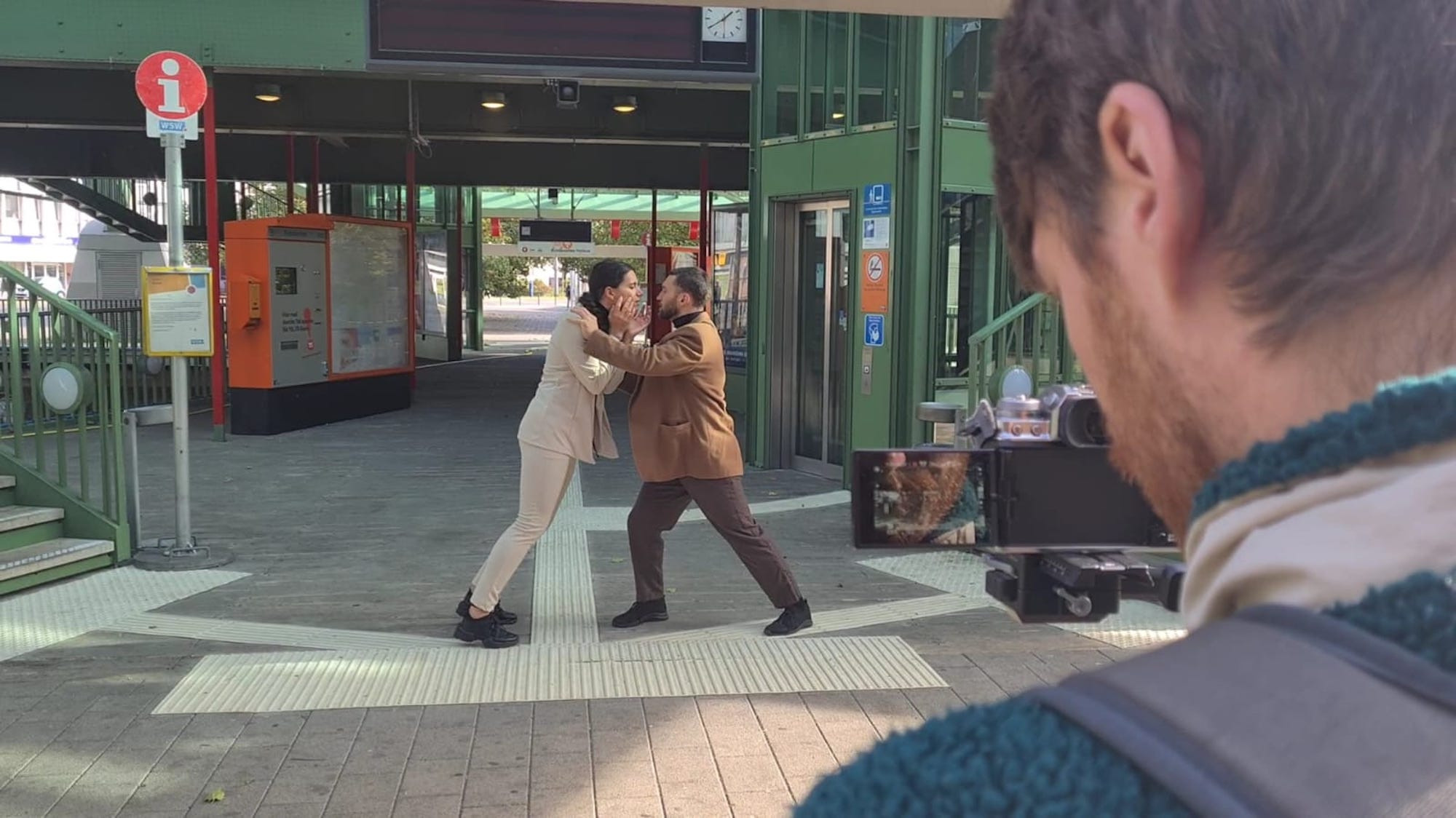 Dancen
Dancen
Editing Dance: Rhythm and Juxtaposition
The editing of Dancen is deliberately startling and inventive, particularly around the five-minute mark with its abrupt transitions. Andrian’s editing process is unique: she first edits the film without music, then refines the timing to sync with the chosen soundtrack. Her dance background informs her editing choices, giving her an intuitive understanding of movement and rhythm. She aims to create a dynamic interplay between camera movement, dancers’ motions, and musical beats.
Andrian enjoys experimenting with both on-beat and off-beat editing, sometimes layering shots randomly to create unexpected and engaging juxtapositions. Her editing style has been likened to pop music videos, capturing both rhythmic predictability and playful, jarring contrasts. This approach aims to create a visceral experience, inviting audiences to move with the film’s rhythm.
What’s Next for Corina Andrian?
Corina Andrian is currently in post-production on another dance short inspired by the “Free the Nipple” movement, featuring a nipple’s quest for freedom through a vogue dance performance. She is also working on Pepperoni from the Sky, a short film exploring the struggles of an actress auditioning for a surreal commercial, and is in pre-production for her debut surreal feature film, The Chair. These upcoming projects promise to further showcase Andrian’s unique vision and her ability to blend dance, surrealism, and social commentary in compelling cinematic narratives.
Dancen is a testament to the power of dance film to explore complex themes and emotions within urban environments. Corina Andrian’s innovative approach to choreography, editing, and storytelling makes Dancen a significant contribution to contemporary dance cinema, offering a captivating and thought-provoking experience for dance enthusiasts and film lovers alike.

